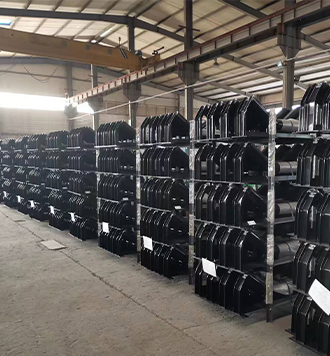 Afrikaans
Afrikaans  Albanian
Albanian  Amharic
Amharic  Arabic
Arabic  Armenian
Armenian  Azerbaijani
Azerbaijani  Basque
Basque  Belarusian
Belarusian  Bengali
Bengali  Bosnian
Bosnian  Bulgarian
Bulgarian  Catalan
Catalan  Cebuano
Cebuano  Corsican
Corsican  Croatian
Croatian  Czech
Czech  Danish
Danish  Dutch
Dutch  English
English  Esperanto
Esperanto  Estonian
Estonian  Finnish
Finnish  French
French  Frisian
Frisian  Galician
Galician  Georgian
Georgian  German
German  Greek
Greek  Gujarati
Gujarati  Haitian Creole
Haitian Creole  hausa
hausa  hawaiian
hawaiian  Hebrew
Hebrew  Hindi
Hindi  Miao
Miao  Hungarian
Hungarian  Icelandic
Icelandic  igbo
igbo  Indonesian
Indonesian  irish
irish  Italian
Italian  Japanese
Japanese  Javanese
Javanese  Kannada
Kannada  kazakh
kazakh  Khmer
Khmer  Rwandese
Rwandese  Korean
Korean  Kurdish
Kurdish  Kyrgyz
Kyrgyz  Lao
Lao  Latin
Latin  Latvian
Latvian  Lithuanian
Lithuanian  Luxembourgish
Luxembourgish  Macedonian
Macedonian  Malgashi
Malgashi  Malay
Malay  Malayalam
Malayalam  Maltese
Maltese  Maori
Maori  Marathi
Marathi  Mongolian
Mongolian  Myanmar
Myanmar  Nepali
Nepali  Norwegian
Norwegian  Norwegian
Norwegian  Occitan
Occitan  Pashto
Pashto  Persian
Persian  Polish
Polish  Portuguese
Portuguese  Punjabi
Punjabi  Romanian
Romanian  Russian
Russian  Samoan
Samoan  Scottish Gaelic
Scottish Gaelic  Serbian
Serbian  Sesotho
Sesotho  Shona
Shona  Sindhi
Sindhi  Sinhala
Sinhala  Slovak
Slovak  Slovenian
Slovenian  Somali
Somali  Spanish
Spanish  Sundanese
Sundanese  Swahili
Swahili  Swedish
Swedish  Tagalog
Tagalog  Tajik
Tajik  Tamil
Tamil  Tatar
Tatar  Telugu
Telugu  Thai
Thai  Turkish
Turkish  Turkmen
Turkmen  Ukrainian
Ukrainian  Urdu
Urdu  Uighur
Uighur  Uzbek
Uzbek  Vietnamese
Vietnamese  Welsh
Welsh  Bantu
Bantu  Yiddish
Yiddish  Yoruba
Yoruba  Zulu
Zulu conveyor belt and pulley
The Mechanics of Conveyor Belts and Pulleys
Conveyor belts and pulleys are integral components in the field of material handling, playing a crucial role in the efficiency of transportation systems across various industries. Understanding these mechanisms provides insight into their applications, advantages, and the technology driving them. This article explores the fundamentals of conveyor belts and pulleys, their operation, and their significance in today’s logistical frameworks.
Fundamental Components
At its core, a conveyor belt is a continuous loop of material that is employed to move goods from one location to another. Typically made from durable materials such as rubber, fabric, or metal, conveyor belts are designed to withstand heavy loads and endure regular wear and tear. They come in various types and sizes, accommodating different applications, ranging from light-duty tasks in warehouses to heavy-duty tasks in mining and manufacturing.
Pulleys, on the other hand, are circular devices that assist in the management of conveyor belts. They often serve as the driving mechanism that rotates the belt, utilizing a motor to provide the necessary power. The pulley system is comprised of two or more pulleys, which can include a drive pulley (the main pulley that receives power from the motor) and one or more idler pulleys that help tension the belt and guide its path.
How They Work Together
The operation of conveyor belts and pulleys is relatively straightforward but highly efficient. When the motor spins the drive pulley, it causes the attached conveyor belt to move in a continuous loop. The weight of the materials being transported provides tension that keeps the belt in place along its path. Idler pulleys help maintain this tension and ensure the belt remains aligned, preventing any misalignment that could result in inefficiencies or material spillage.
As the belt moves, various goods—ranging from small boxes to bulk materials—are placed on the belt for transport. Depending on the system design, these goods can be transported at various speeds and inclines to optimize the movement process. Advanced systems can incorporate sensors and controls that automate this movement, allowing for the smooth integration of conveyor systems within complex manufacturing and distribution operations.
conveyor belt and pulley

Applications Across Industries
Conveyor belts and pulleys have diverse applications across different sectors. In manufacturing, they are essential for assembling products efficiently. In distribution centers, conveyor belts streamline the sorting and packing processes, ensuring that items reach their destinations swiftly. The mining industry relies heavily on conveyor systems to transport ores and minerals from extraction sites to processing plants. Additionally, in agriculture, conveyor belts facilitate the movement of crops from harvesters to storage areas.
These systems are also critical in the food industry, where hygiene and efficiency are paramount. Conveyor belts designed for food processing are constructed from materials that resist contamination and allow for thorough cleaning. This ensures that products can be transported safely, meeting health and safety regulations.
Advantages of Conveyor Systems
The adoption of conveyor belts and pulleys offers numerous advantages. Primarily, they enhance productivity by allowing for continuous, automated transport of materials, thereby reducing the need for manual handling. This not only saves time but also minimizes the risk of workplace injuries. Furthermore, conveyor systems can be customized to fit specific operational requirements, such as adjusting the belt's speed or incorporating various incline angles.
Moreover, these systems contribute to cost savings in the long term. By streamlining processes and improving efficiency, businesses can significantly reduce labor costs and increase output. Their durability and low maintenance requirements further make them a cost-effective choice for companies looking to optimize their operations.
Conclusion
In conclusion, conveyor belts and pulleys are vital to modern material handling solutions. They facilitate the efficient movement of goods across various industries and provide significant advantages in terms of productivity, safety, and cost-effectiveness. With technological advancements continuing to evolve these systems, the future holds promise for even greater efficiency and innovation in the realm of conveyor technology, solidifying their essential role in the logistics landscape. As businesses continue to demand faster and more efficient processes, conveyor belts and pulleys will undoubtedly remain at the forefront of material handling solutions.
-
Revolutionizing Conveyor Reliability with Advanced Rubber Lagging PulleysNewsJul.22,2025
-
Powering Precision and Durability with Expert Manufacturers of Conveyor ComponentsNewsJul.22,2025
-
Optimizing Conveyor Systems with Advanced Conveyor AccessoriesNewsJul.22,2025
-
Maximize Conveyor Efficiency with Quality Conveyor Idler PulleysNewsJul.22,2025
-
Future-Proof Your Conveyor System with High-Performance Polyurethane RollerNewsJul.22,2025
-
Driving Efficiency Forward with Quality Idlers and RollersNewsJul.22,2025





























